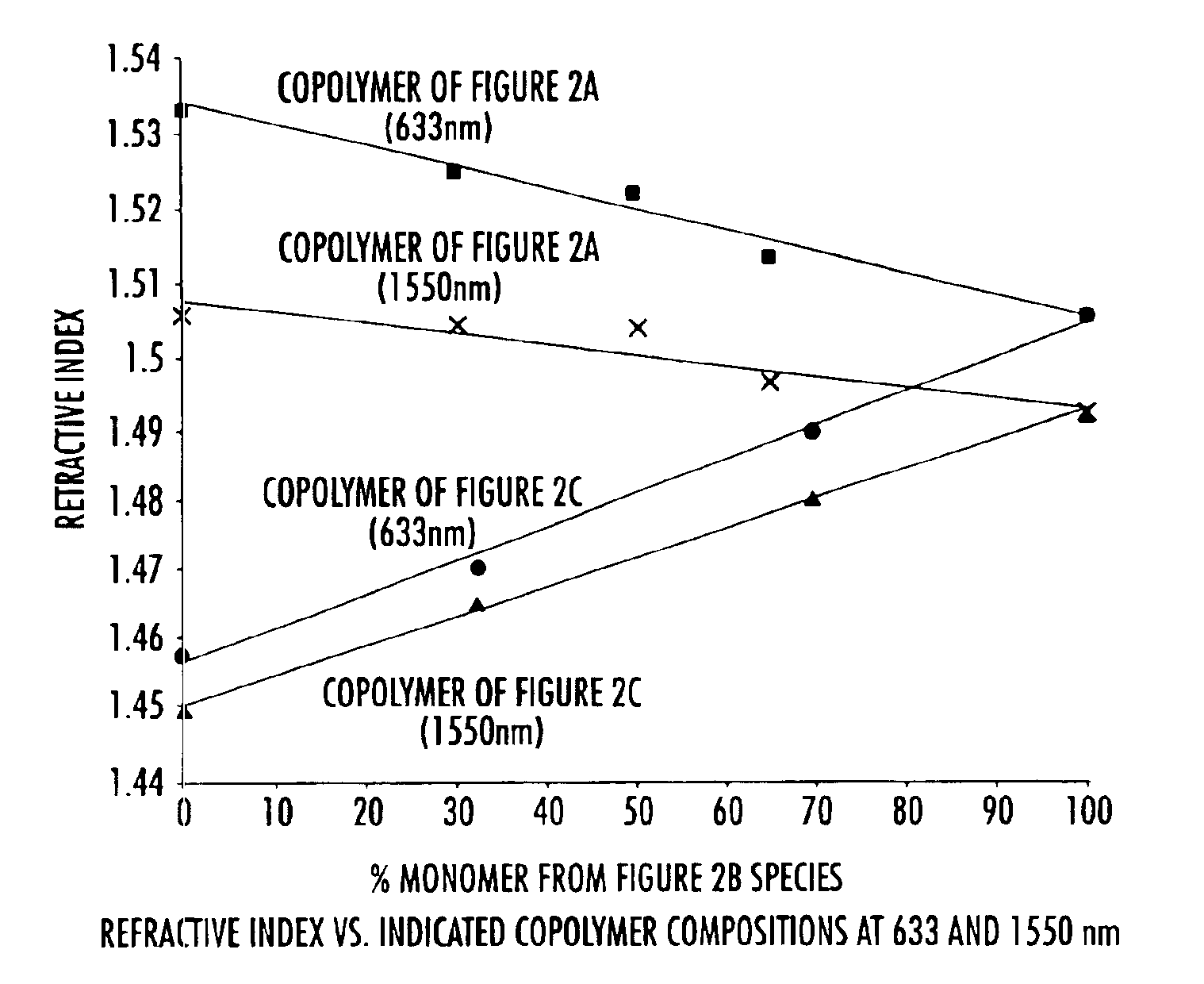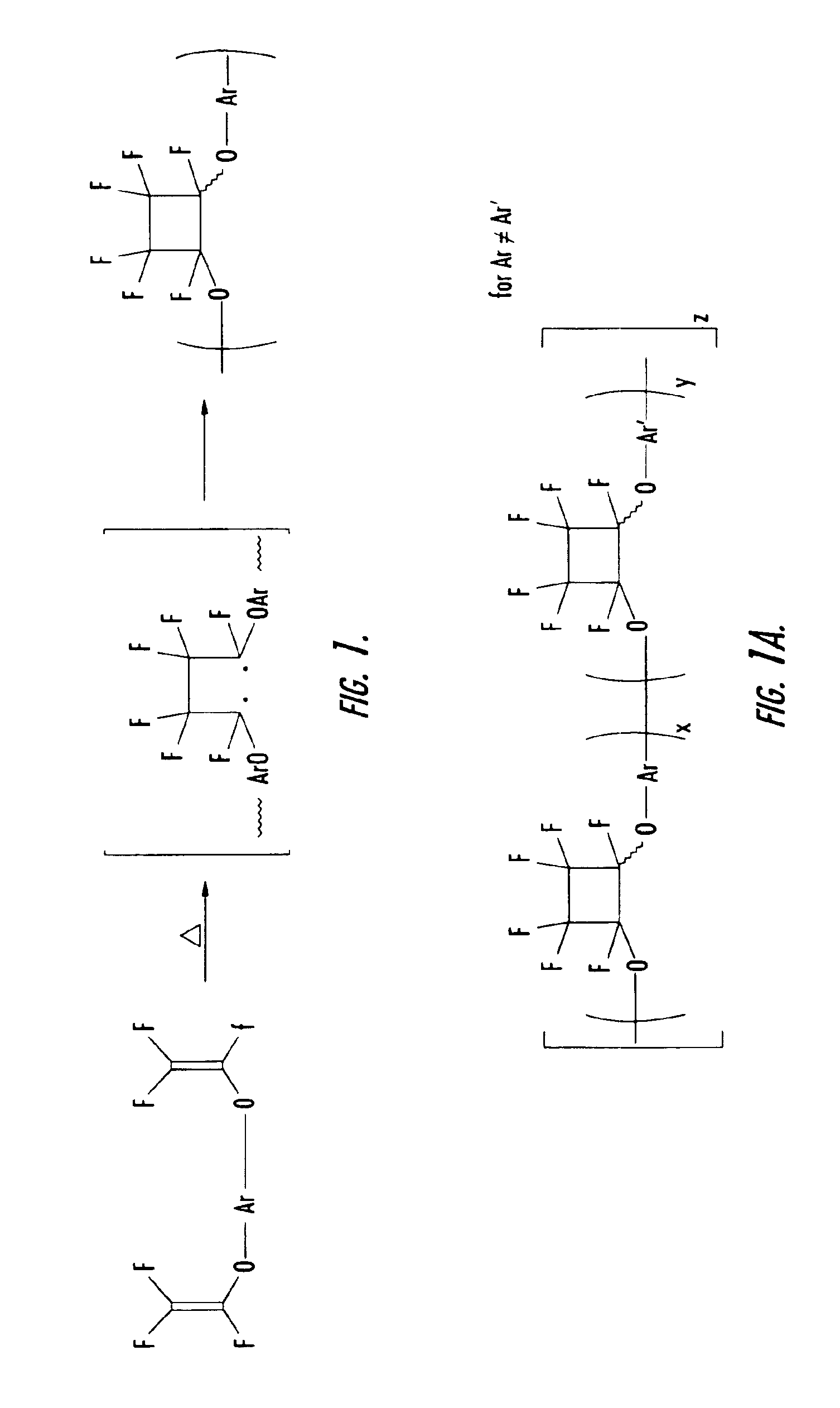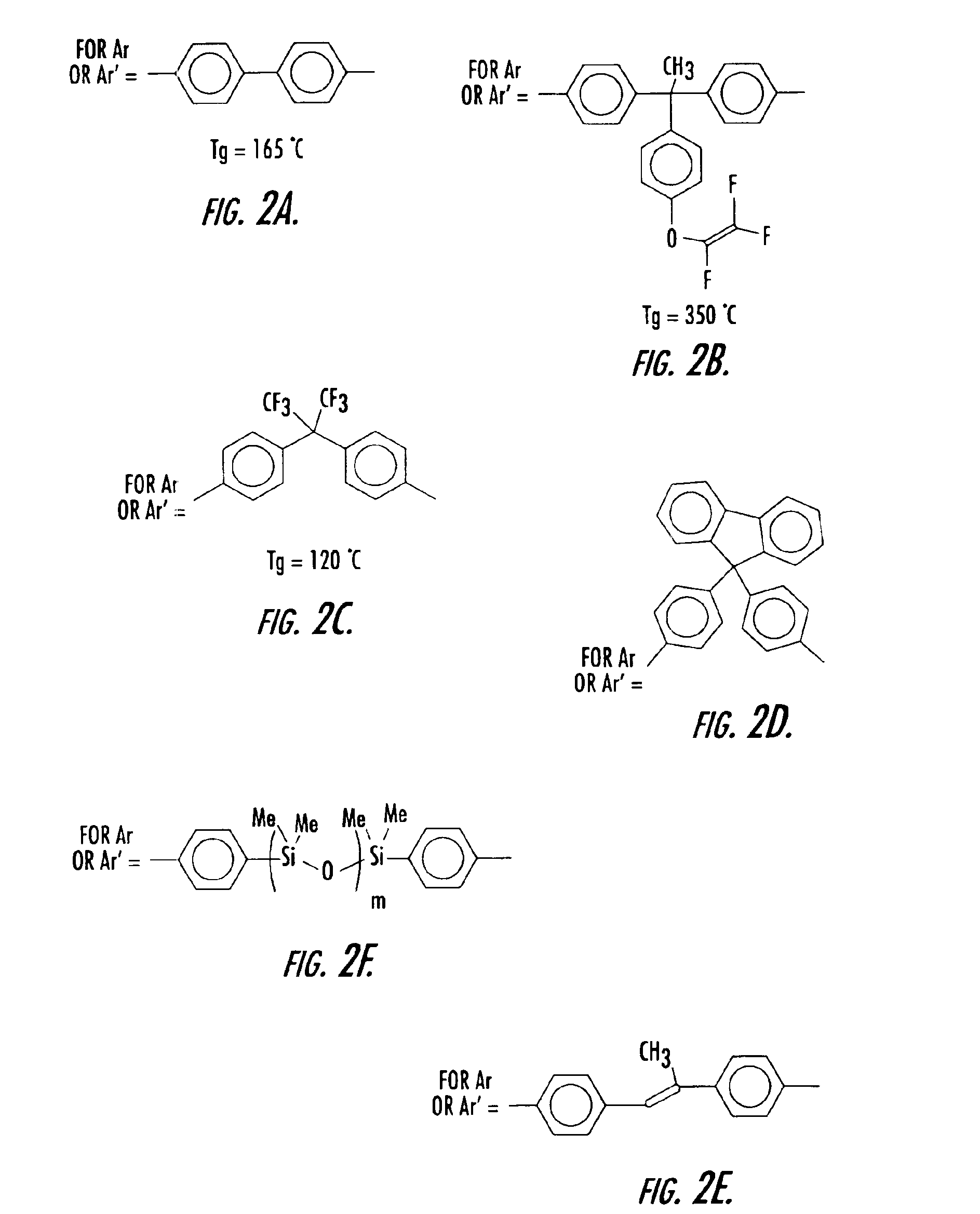Fluoropolymer compositions, optical devices, and methods for fabricating optical devices
a technology of fluoropolymer compositions and optical devices, applied in the direction of instruments, diffusion transfer processes, photomechanical apparatuses, etc., can solve the problems of added interface problems, cost and time consumption, etc., and achieve variable refractive index, high temperature, and high optical properties.
- Summary
- Abstract
- Description
- Claims
- Application Information
AI Technical Summary
Benefits of technology
Problems solved by technology
Method used
Image
Examples
example 1
Homopolymer of 2B (75 wt % in Mesitylene)
[0052]To a three neck round bottom flask equipped with nitrogen inlet, reflux condenser and mechanical stir was added 175 g of pure monomer 2B and 58.3 g of filtered mesitylene. The solution was degassed as described in the general procedures and experimental details above. The clear solution was then heated to 150-160° C. for 1.45 h and allowed to cool. The resulting homopolymer exhibited a olefin conversion of 34.8%, a number average molecular weight (Mn) of 2,444 and a weight average molecular weight (Mw) of 7033, and a molecular weight distribution of 2.89 (See Table 2). The polymer solution was spin coated and cured as described above and gave a thermoset film with refractive index of 1.4883 (at 1550 nm) and a glass transition temperature of 350° C.
example 2
Copolymer of 2B and 2A (50:50 Ratio, 89 wt % in Mesitylene)
[0053]To a three neck round bottom flask equipped with nitrogen inlet, reflux condenser and mechanical stir was added 40 g of pure monomer 2B, 40 g of pure monomer 2A, and 10 g of filtered mesitylene. The solution was degassed as described in the general procedures and experimental details above. The clear solution was then heated to 150-160° C. for 2.5 h and allowed to cool. The resulting copolymer exhibited a olefin conversion of 37.3%, a number average molecular weight (Mn) of 589 and a weight average molecular weight (Mw) of 1212, and a molecular weight distribution of 2.06 (See Table 2). The polymer solution was spin coated and cured as described above and gave a thermoset film with refractive index of 1.5036 (at 1550 nm) and a glass transition temperature of 225° C.
example 3
Copolymer of 2B and 2C (70:30 Ratio, 50 wt % in Mesitylene)
[0054]To a three neck round bottom flask equipped with nitrogen inlet, reflux condenser and mechanical stir was added 17.4 g of pure monomer 2B, 7.8 g of pure monomer 2C, and 25 g of filtered mesitylene. The solution was degassed as described in the general procedures and experimental details above. The clear solution was then heated to 150-160° C. for 8 h and allowed to cool. The resulting copolymer exhibited a olefin conversion of 44.2%, a number average molecular weight (Mn) of 1859 and a weight average molecular weight (Mw) of 4656, and a molecular weight distribution of 2.5 (See Table 2). The polymer solution was spin coated and cured as described above and gave a thermoset film with refractive index of 1.4785 (at 1550 nm) and a glass transition temperature of 221° C.
PUM
| Property | Measurement | Unit |
|---|---|---|
| Length | aaaaa | aaaaa |
| Fraction | aaaaa | aaaaa |
| Fraction | aaaaa | aaaaa |
Abstract
Description
Claims
Application Information
 Login to View More
Login to View More - R&D
- Intellectual Property
- Life Sciences
- Materials
- Tech Scout
- Unparalleled Data Quality
- Higher Quality Content
- 60% Fewer Hallucinations
Browse by: Latest US Patents, China's latest patents, Technical Efficacy Thesaurus, Application Domain, Technology Topic, Popular Technical Reports.
© 2025 PatSnap. All rights reserved.Legal|Privacy policy|Modern Slavery Act Transparency Statement|Sitemap|About US| Contact US: help@patsnap.com



